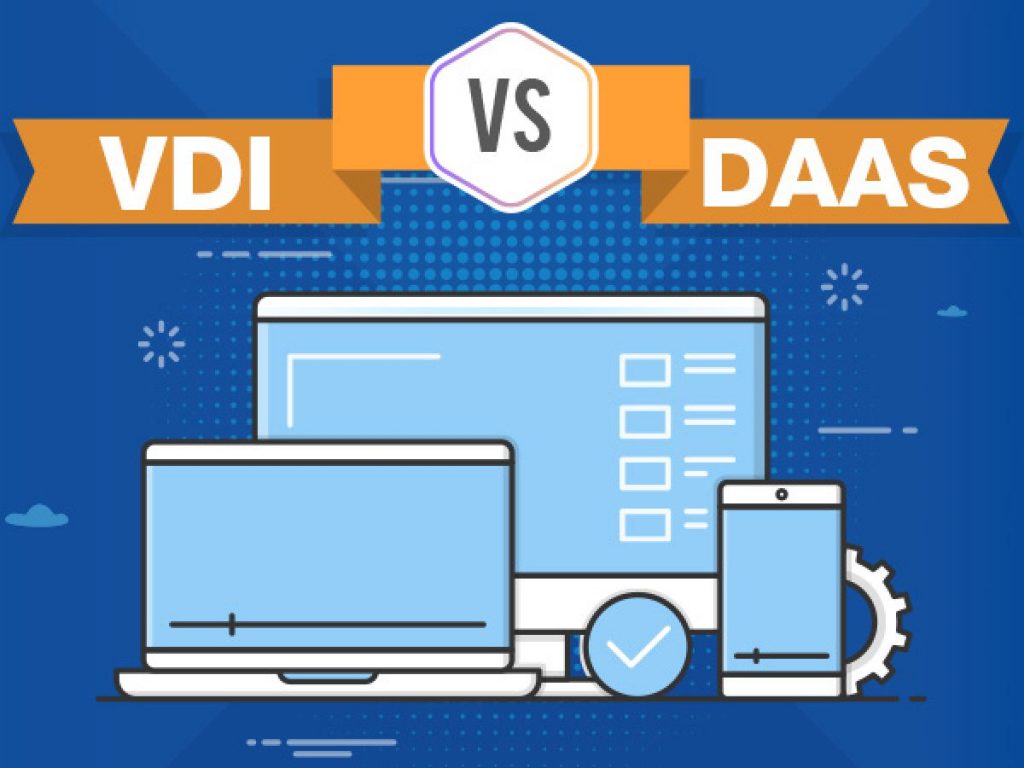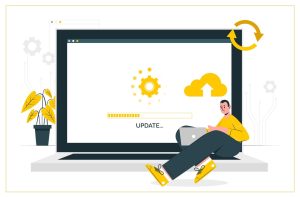Which Is A Better Option For Healthcare Industry: On-Premise VDI or DaaS?

The healthcare industry took one of the first steps towards digital transformation through Virtual Desktop Infrastructure (VDI). Verbal Communication
Originally, VDI was adopted by this industry to help doctors and healthcare staff securely access the information of patients.
However, this was a long time back. Now, VDI solutions are becoming hard to upgrade because of the huge capital investments involved. Therefore, we are currently observing a shift to cloud-hosted VDI or Desktop as a Service (DaaS).
According to this research, the market of DaaS or hosted VDI will reach around USD 1000 Million in the next two years.
It is obvious that DaaS is the new, cost-effective, and more efficient option. In this article, we assess which is better for the healthcare industry—on-premise VDI or DaaS?
Virtual Desktop Infrastructure
VDI is a remote infrastructure that businesses use to host virtual systems on-premise. This type of infrastructure is set up in the office to eliminate traditional location-based desktops and implement virtual desktops.
It provides access to PC units, their resources, and applications from any device and location. Here’s a glimpse of the services that you get with on-premise VDI:
- Admin optimization
- Centralized management
- BYOD policy support
- Simpler accessibility
- Total control over data
- Better security
- Mobility
- Productivity and efficiency
DaaS
DaaS is similar to VDI, but it is a cloud-based solution procured from a service provider. Desktop virtualization is achieved by hosting desktops, apps, and resources on the cloud. It is cost-effective, easy to use, and more reliable than an on-premise VDI.
With DaaS hosting, healthcare providers can also access resources from anywhere and from any device. Here are some services offered by DaaS:
- Limited desktop challenges
- Disaster management and business continuity
- Data backup on multiple servers
- Scalability
- BYOD policy support
- Responsiveness
- No hardware investment
Which works better for you?
Managed Service
On-premise VDI is not a managed service; it is an in-house infrastructure handled, implemented, and maintained by your IT team. As a healthcare provider, this means more hassle, as you need to hire and manage a team, which will take care of your VDI infrastructure.
Contrary to this, DaaS is a managed IT service offered by a cloud provider. The customer of this service only needs to decide a package, communicate when there’s an issue in access, request scaling/descaling or resources, and enjoy unhindered access.
The beauty of managed services is that they are much less hassle. The cloud provider looks after everything from hardware maintenance to software upgrades and support.
BYOD Support
Both VDI and DaaS solutions support the BYOD policy of the business. As a healthcare provider, you can allow your employees to access the company’s record on their personal devices, such as smartphones, without compromising the security architecture of the business.
The only difference that we can map out here is the feasibility of implementing this policy. VDI comes with some difficulties because your IT team is managing the security of every endpoint. But, in DaaS, there’s no such difficulty, and the security of every endpoint is managed by the service provider.
Scalability
One of the important benefits of the cloud is scalability. Whereas, VDI deployments require more time and setup. The team behind this work needs to put in a lot of resources and hard work to implement, modify, and manage the infrastructure.
For instance, if in the past two years, your business has grown. This means that you need to scale your resources to work seamlessly. Thus, you require more hardware, installations, and upgrades. In such cases, scaling VDI solutions is expensive. You need to purchase the hardware and spend a lot of time deploying
DaaS solutions come with simpler scaling options. If you need to scale your resources and purchase more user licenses, then you just need to inform your service provider. Additionally, in DaaS, there’s the benefit of OS licensing. These licenses are in-built in the service offered, which means you can change your OS or combine OS whenever required.
Security
As a healthcare provider, data privacy and security are imperative. Every patient or customer of the organization leaves behind some essential data, including personally identifiable information, health records, credit card details, insurance records, SSNs, etc. Securing these records is not a choice; it is a necessity.
VDI solutions can be designed with a proper security architecture to curb cyber threats. This would include adding features like multi-factor authentication, physical server security, access control, and intrusion detection and prevention.
On the other hand, DaaS solutions provide security differently: you don’t have to implement the security architecture on your own. The CSP offers security controls similar to VDI. Hence, your organization can utilize this security without playing a role in its implementation.
| DaaS | VDI |
| Utilize BYOD policy: allow staff to use their own devices to access patient records securely. | Allow BYOD but maintaining the security is difficult, as security is managed by your IT team. |
| Flexible model, which means easy scaling of resources. Your organization can increase resources whenever needed and decrease when there’s a shortage of demand. | You have the flexibility of resource scaling, that too at a great expense. You need to purchase the hardware infrastructure required for scaling. |
| Location-independent services that help your staff access records and important applications via the Internet. Users can use their phone, laptop, desktop, or tablet to see an X-ray or check past patient records. | Location-dependent services that require your staff to stay in the proximity of your office premises for unhindered access. |
| The cost is decided as per the pay-as-you-use model. This means that you don’t need to think about the expenses of the hardware, software, or upgrades. | The cost is based on the server setup. Everything from hardware to upgrade cost is on the enterprise. |
Conclusion
The ideal solution for your healthcare organization depends on your unique requirements. If managing the security by yourself is comfortable for you, then VDI seems like a better choice. However, if you are more inclined towards a managed service and do not wish to manage the technicalities on your own, then DaaS is a clear winner.
Author Bio
Mohak is a technical content writer at Ace Cloud Hosting, a renowned virtual desktop, and cloud-hosted desktop service provider. When not writing about the latest developments in VDI, DaaS, AI, Big Data, he loves to watch movies and ride bikes.





